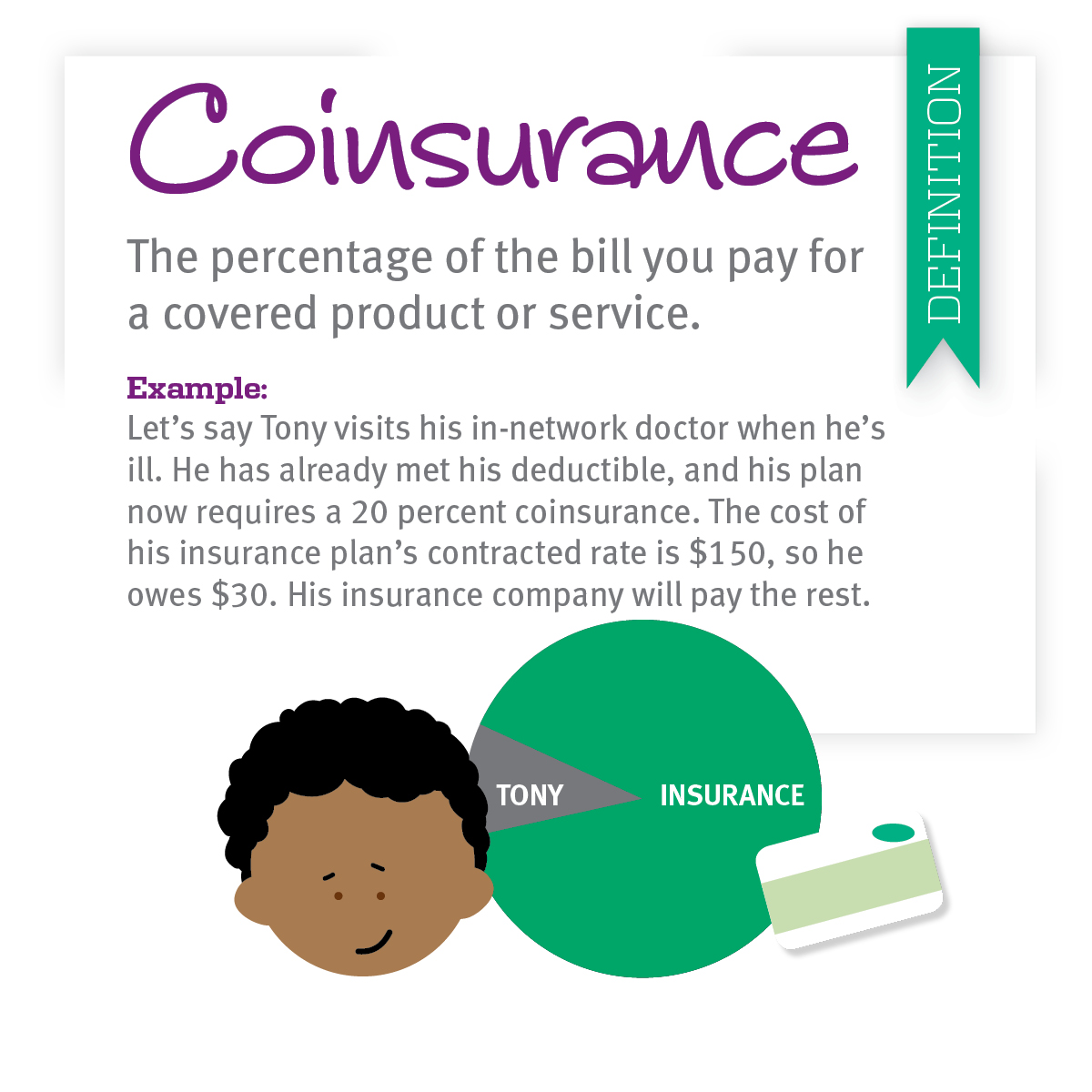
That said, if you are concerned about being able to afford your copay at the time of your visit, talk to your doctor’s office.

You will not receive a bill in the mail after the fact for your copay amount. That means that depending on your doctor’s office procedures, you’ll pay your copay either before seeing the doctor when you check-in or after you see the doctor when you check-out. With rare exception, copayments are due at the time of your visit to your doctor. You can also receive blood pressure screening, some kinds of cancer screenings, and depression screenings and more at no cost as long as you see an in-network provider. These no-cost preventive services include everything from STI screening to contraception. There are separate categories of preventive care services covered by a $0 copay for adults, women and children. And all of this means that your health insurance makes sure that your healthcare is truly affordable.
#CO PAY INSURANCE DEFINITION FREE#
A number of other preventive forms of healthcare are also covered, free of charge to you. This also means you won’t pay for your yearly well-woman exam. In other words, you will pay nothing to see your doctor for your annual check-ups. Thanks to the Affordable Care Act (ACA), when you see an in-network provider for a number of preventive care services, those visits come with a $0 copay. Be sure to check your specific plan details. With these kinds of plans, you’ll pay copays from the start.

Keep in mind, though, that some plans don’t require you to meet your deductible before paying copays. After your deductible, you pay your copay and your health plan pays the rest. Before your deductible, you might pay $120 for the visit, in lieu of a copay. If you have not met your deductible, you will pay the maximum allowable amount for that visit, as determined by the agreement between your health insurance company and provider. If your plan requires you to meet your deductible before paying copays and you’ve done so for the year, you will just pay the $40 copay to see that doctor. And let’s say your insurance plan has a $40 copay for a specialist visit. What is an example of how a copay works?įor example, let’s say you go to your dermatologist. A copay is always less than the maximum allowable amount for a given kind of visit. Once you have met your deductible, you will just pay your copay. If you have not met your deductible, and your plan requires that you meet your deductible first, you will pay the maximum agreed upon amount for that visit. When you see an in-network provider, that means your insurance company has come to an agreement with that provider on a fixed amount you will owe to see them. And once you’ve met your annual out-of-pocket maximum, your health insurance plan will cover all your covered medical care. Once you’ve met your deductible, you will only pay copayments and coinsurance amounts for your healthcare. To break things down further, your deductible is the amount you must first pay out-of-pocket for your healthcare before your health insurance policy begins to pay for some or all of your care. Some plans may allow you to pay a copay for some healthcare services even before meeting your deductible. There are also separate copay amounts for emergency room care, urgent care, and other services ranging from speech therapy to physical therapy.īe sure to check the details of your specific health plan, though. How does a copay work?įor most insurance plans, there is one copay amount for your primary care physician, and then another for any specialists. Check the summary of benefits for your specific plan to understand when you’ll be paying copays and in what amounts. Likewise, you’ll usually find one set of copay rates for name-brand prescription drugs, and another for generic drugs. You will typically encounter one copay rate for primary care and another for specialists. The most common place you might find copays are primary care doctor visits or paying for prescriptions. You’ll encounter copays for a variety of different services, from primary care to emergency transportation. Sometimes, copays are not available until after you’ve met your annual deductible. What is a copayment in health insurance?ĭon’t let the complicated word throw you ! Most simply, a copayment (copay) is a fixed amount you pay for healthcare services. Here’s what you need to know about these fixed dollar amount payments you’ll make for your healthcare. That is, until you break it down and understand the way that copays work within the health insurance system.

What is a copayment, when is it due, and what does it cover? It can seem overwhelming.


 0 kommentar(er)
0 kommentar(er)
